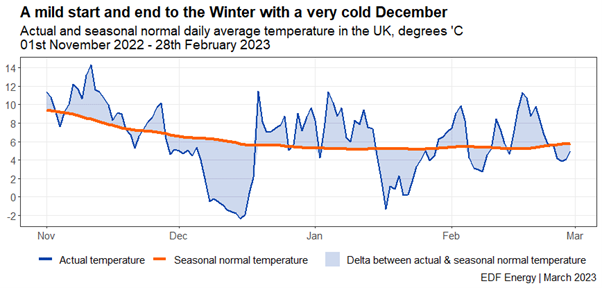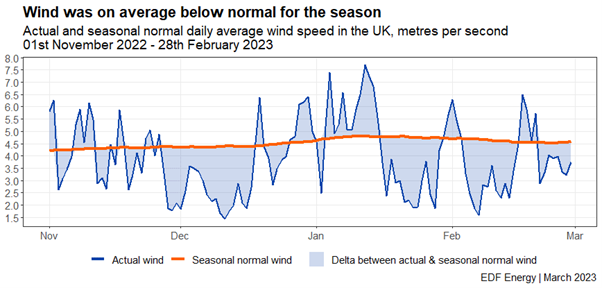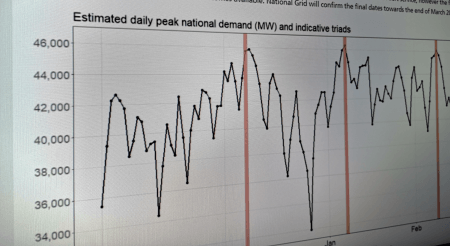
Triads 2022/23: this year’s announcement and what it means for your organisation
National Grid Electricity System Operator has confirmed the winter period Triad peaks for 2022/23.
Read on for more info on how this affects your organisation and what action you need to take.
What are Triads?
Triads are the top three half-hourly peaks of national energy demand across the grid, separated by ten clear calendar days, over the most energy intensive period of the year: November to February. National Grid confirms these peaks after the season, at the end of March.
Typically, triads occur when high business demand meets the domestic mid/late afternoon tea-time period, causing an overall spike in energy use.
How Triads impact your energy bill
To manage the huge demand on the network during the triad periods, the National Grid imposes a Transmissions Network Use of System (TNUoS) charge. This is used to finance the maintenance of the UK’s electricity grid to ensure future supply. Impacting customers with half-hourly meters, the charge is proportional to a business’ energy use over the triad periods (the three half hours of highest demand) and is linked to their location. If a business doesn’t consume electricity in the three Triad periods, they don’t pay HH (half-hourly) TNUoS charges for the entire financial year.
As standard, we include a charge for 85% of your maximum demand figure for TNUoS on our customer bills. After the final triads are announced, we issue the March invoices to show the triad periods and make any reconciliations.
The Triad challenge
To mitigate against Triad costs, companies and suppliers work hard to predict when they’ll be so they can turn down or off their energy usage during those periods. Due to the increasing use of Triad avoidance schemes as well as flexibility solutions, such as Demand Side Response and the growing use of renewables, they are getting harder to predict.
The Grid confirmed the three peaks at:
- Friday 02-Dec-22 from 17:30-18:00 with peak demand at 39,573 MW
- Thursday 15-Dec-22 from 17:00-17:30 with peak demand at 44,561 MW
- Tuesday 17-Jan-23 from 17:00-17:30 with peak demand at 42,022 MW
Our Triad results
To support our customers, we have a team of energy experts with complex modelling and forecasting tools designed to determine when triads will likely be.
EDF successfully predicted and issued alerts for 2 out of the 3 triads. Any customers who receive Triad alerts via Market Insight will have benefitted from our forecast. This season was a particularly challenging one to forecast due to frequent cold spells. The Triad which occurred on Friday 2nd December was part of a prolonged cold period from late November into mid-December, during which many triad alerts were issued. We made the decision not to issue an alert on the Friday as in the past 20 years only once has a triad occurred on a Friday and demand was much high in the following week.
By forecasting and reacting to expected Triads, you avoid costly peak charges. You also help the Grid during periods of high demand.
Here are some of the factors our team takes into consideration:
Temperature overview
Temperature is one of the most important factors that influence electricity consumption during winter.
The season began with a mild November followed by a very cold first half of December in which average UK temperatures dropped to around 7-9C below normal. Temperatures moderated back above normal by Christmas and into early January with another brief cold spell in mid/late January which brought average January temperatures close to normal. February temperatures were on average 1.1C above normal, although with a high pressure dominated pattern it was very dry with low wind.

Wind speed overview
Wind can have a significant impact on the UK transmission demand and therefore timing of triads.
On average wind was below normal throughout the winter due to a dominance of high pressure, which prevented low pressure systems progressing through northern Europe.

For further detail you can login or register to our Market Insight page.
Post a comment
Related articles
